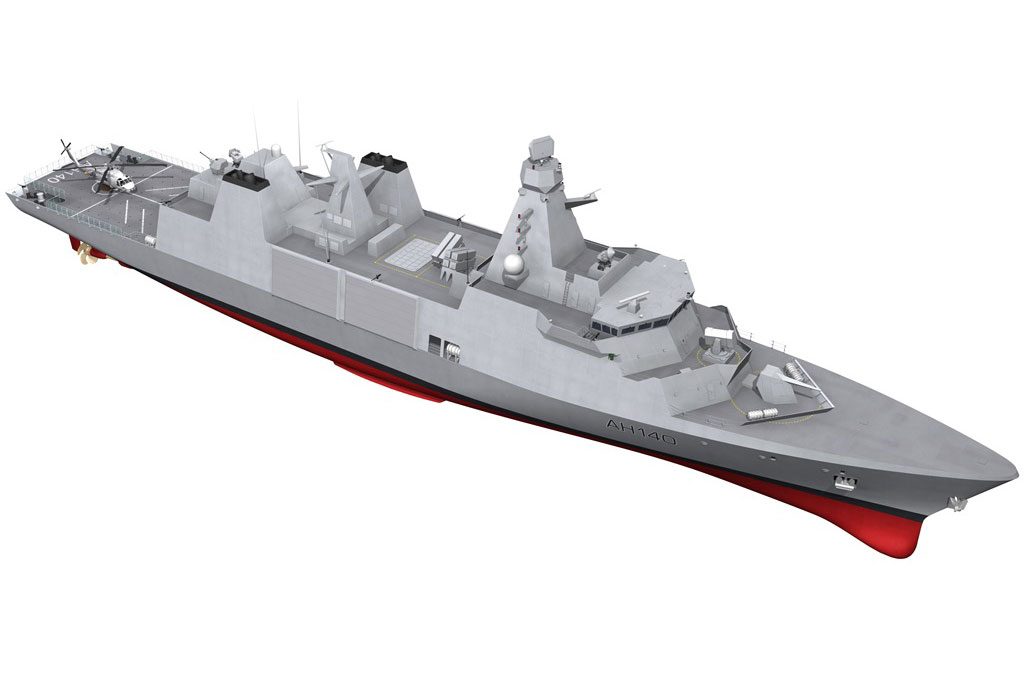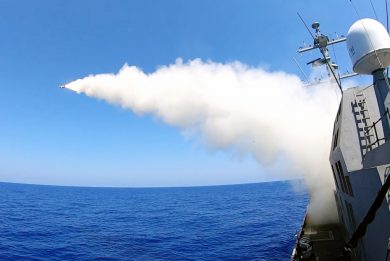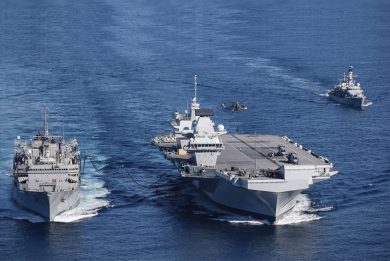Babcock’s Arrowhead hits the target for Type 31 frigate
By Ian Kemp
The UK Ministry of Defence (MOD) announced on 12 September the selection of Babcock Team 31 as the preferred bidder for the Royal Navy’s Type 31e general purpose frigate programme intended to deliver five ships at an average production cost of £250 million.
Work on the five ships will begin immediately following formal contract award later this financial year, with detailed design work to start now and production beginning in 2021 and concluding in 2027.
Atlas Elektronik UK, Babcock and BAE Systems were each awarded competitive design phase contracts, worth GBP5 million apiece, in December 2018 to mature their proposals over a seven-month period.

Babcock’s winning Arrowhead 140 design, developed in conjunction with Thales, OMT and BMT, is based on the Iver Huitfeldt-class frigate, three of which are in service with the Royal Danish Navy.
“When we were looking to understand the MOD’s requirements, we very quickly worked out that a frigate of 120 metres and 3,500 tons was not going to achieve the aim,” Mark Harvey, Babcock’s Business Development Manager – Warships, told EDR On-Line. “We’ve gone for a 6,000-ton design, another 20 metres in length, another 4 metres in width and all that open space delivers the versatility that the Royal Navy are after.”
“The Royal Danish Navy with the Iver Huitfeldt- and its predecessor, the Absalon-class, had already put a lot of thought into what it takes to deliver an affordable warship and also ensure that over the life of that ship, which is where the vast majority of costs are, to make sure that the design provides affordable technology growth and in service support. So, the Iver Huitfeldt-class became a natural parent design for what the Royal Navy was looking for in the Type 31 programme.”
“We partnered with OMT, who hold the design, and we took that design and applied the NATO ANEP 77 naval ship code to introduce military survivability requirements. The parent design was very commercial based with a lot of clever commercial design elements which we’ve retained but we’ve introduced the survivability needs learned from the Falklands War and other conflicts into the Arrowhead 140. For instance, a blast bulkhead between the forward and aft engine rooms has been introduced so that if you get hit forward you’ve got propulsion aft and vice versa.”
“With our partner Thales, we will deliver the TACTICOS Combat Management System to meet the threat requirements that the Royal Navy articulated as part of the competition. The primary requirement from MoD was to make sure that not only did it meet those threats, but that it was adaptable to try and keep those through life costs to a minimum. By adopting TACTICOS and by adopting the Huitfeldt platform, we’ve simplified adaptability. Taking a radar off and replacing it becomes a complex business simplified. You can do it in a matter of weeks as opposed to a matter of months. The same with the weapon systems and the same with any of the other sensors.”
“It’s hugely configurable this ship,” said Harvey “The four boat bays, for instance, are big enough to take the largest, 9.5 metres RIB used by the Royal Navy today, in all four positions. You could very quickly change that out and put in a fast assault craft for embarked forces or a special forces insertion craft. You could put in an unmanned underwater vessel, controlled from a mission bay onboard. You can take it out and put in a 20-foot container.”
“We also have a mission bay underneath the flight deck where you can put four 20-foot containers. And we all know how versatile the 20-foot container is, whether it’s a classroom, spares, or disaster relief stores, you can reroll the ship in the middle of a deployment. And that’s what navies are really looking for today; they don’t want to spend a lot of money reconfiguring a ship. They need to be able to react quickly to world events, they don’t want to bring it all the way home to do that. They want to send it to the next port, get their 20-foot containers, reconfigure the ship and send it off it to do the next job.”
“We have also gone for a minimalist crew requirement. So 100 personnel for routine operations can safely operate the ship in accordance with the Royal Navy’s doctrine there are 180 plus berths on board so you can embark trainees or special forces, enhanced the ship’s company to deliver an operational requirement, even government departments such as Conservation, you’ve got really comfortable accommodation at the same standard for everybody throughout the ship.”
With Babcock’s Rosyth facility as the central integration site, the winning bid supports the principles of the UK’s National Shipbuilding and builds on the knowledge and expertise developed during the Queen Elizabeth aircraft carrier modular build programme. At its height the programme will employ a workforce of around 1,250 in multiple locations throughout the UK, with around 150 new technical apprenticeships likely to be developed. The work is expected to support an additional 1.250 roles within the wider UK supply chain.
The ‘e’ in Type 31e stands for export. “As part of the programme we’re fully committed to delivering exports and trying to replicate some of the success we’ve seen in the Type 26 programme,” said Harvey in reference to the BAE Systems design selected by Australia and Canada. “Yes, there’s a lot of interest out there.”


